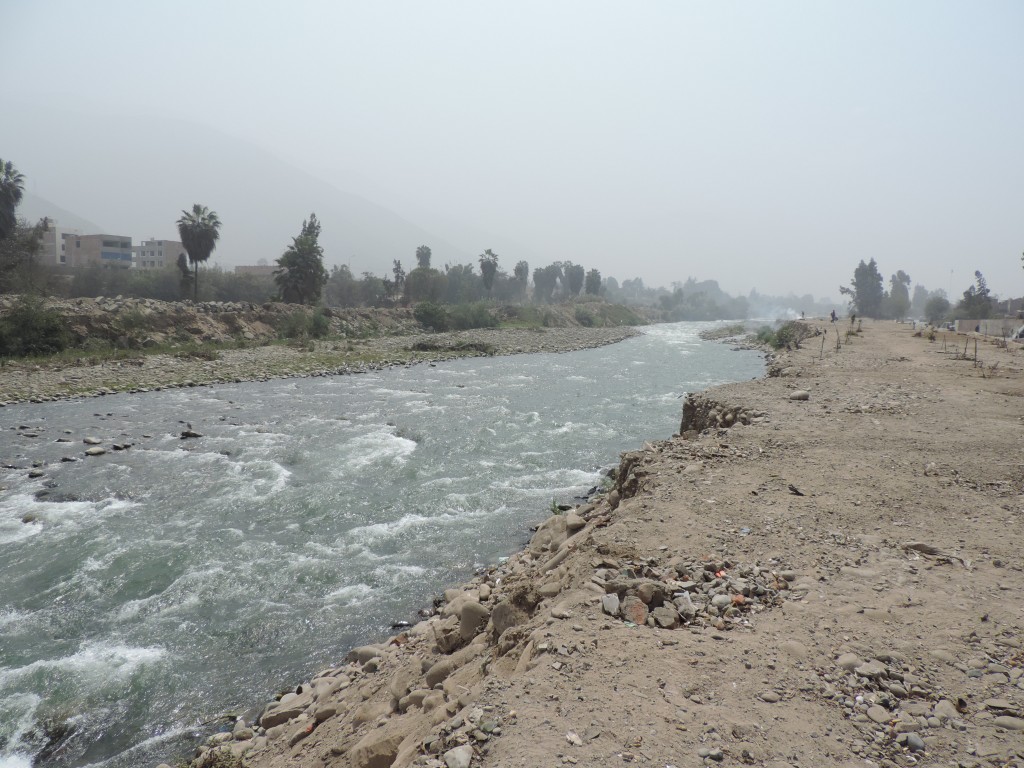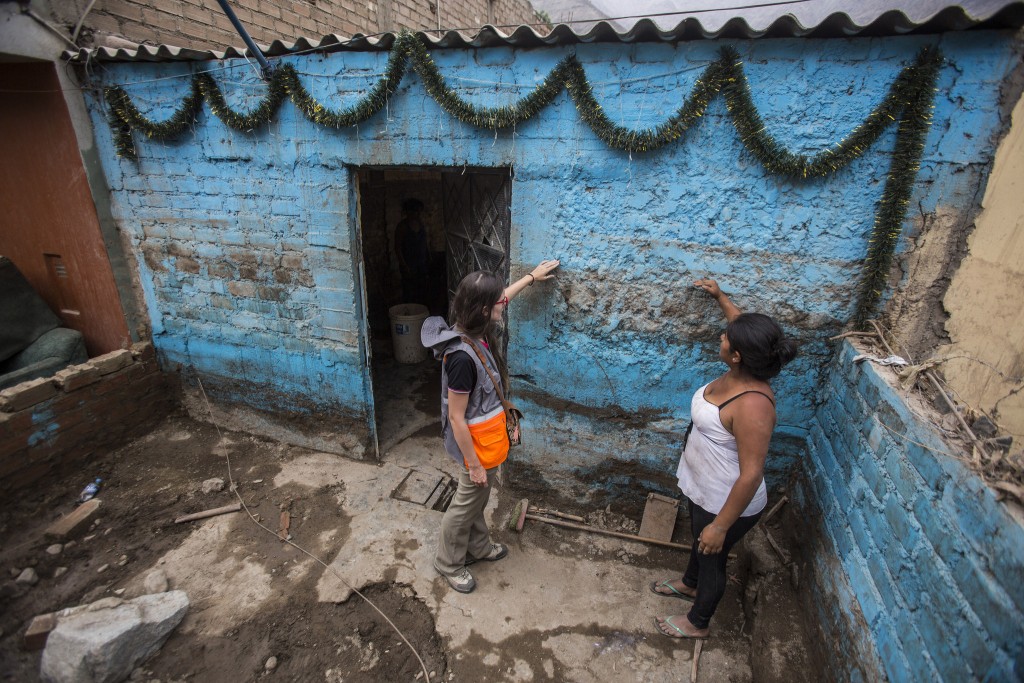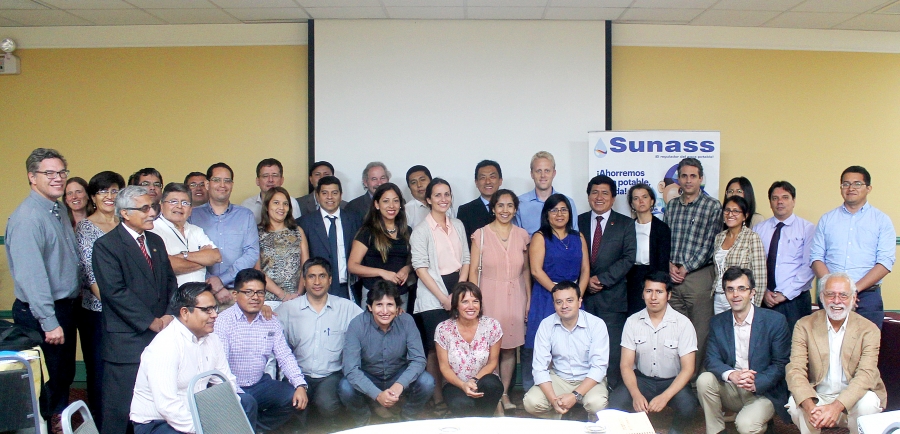On the eve of World Water Day last week, and for a week before, millions of Peruvians that live in the country’s coastal zone were reminded of the power of water on their daily lives. Heavy rains triggered violent flooding and landslides, which were shared with the world through unnerving images of homes lost to raging rivers and people struggling out of the mud.
In a cruel paradox, neighborhoods under floodwater had dry taps and no drinking water. High levels of sediments from mudslides had forced SEDAPAL, Lima’s water utility, as well as other utilities throughout the coastal region to shut off intakes, shutting off water supply for millions of residents. Adding to the visuals of the damage inflicted by excess water were images of Limeños lining up around the block to receive water from a tanker truck.
The desert climate of Peru’s coastal region makes it very vulnerable to extreme weather events. When those events strike, areas that normally receive two inches of rain during the entire rainy season might be forced to absorb that much in a single day and over 10 times as much over weeks.
The Rímac River – a critical water source for Lima – seen here when not flooding (Photo: Gena Gammie)
Last week’s multi-faceted disaster in Peru should be a wake-up call for policymakers and water managers around the world; if we take a closer look at it, we can identify several broadly applicable lessons that can be learned in places like Lima and elsewhere in the world.
Here are the three biggest takeaways:
- Under the climatic and weather extremes that our world is now experiencing, risk management has to be built into the core of our planning processes and urban systems – not tacked-on as an afterthought and not addressed on a case-by-case basis. Last year, the Peruvian government, anticipating a strong El Niño cycle that would have resulted in similar rains, allocated PEN 890 million (US$274 million) on disaster risk reduction. When the heavy rains didn’t materialize, the government curtailed its efforts accordingly, using only 68% of the amount set aside. But then the rains arrived – a year late – caused by “El Niño Costero,” a localized and unexpected phenomenon that causes unpredictable warming patterns in the ocean currents off the coast, but which is unrelated to the El Niño. Such phenomena are bound to happen more frequently – and unpredictably – in a climate thrown off balance by global warming, highlighting the importance of building risk management into business as usual.
- Resilient water management systems must include more than just traditional “gray” infrastructure – massive works of concrete and steel – to fully address growing and changing risks. Gray infrastructure needs complementing “green” infrastructure that harnesses the ability of natural systems to regulate water’s flow or filter pollutants and sediments – along with governance that guides development and construction. In the case of Peru, Forest Trends research has shown that green interventions like restoring wetlands and pre-Incan infiltration ditches can be much more cost-effective than gray infrastructure alternatives for regulating water flows during the dry season. While it can be tempting to simply announce plans for a new retention dam shortly after a disaster to demonstrate government response– as was shown last week when the Minister of Defense, Jorge Nieto Montesinos, promised to build new structures to address flooding risk; focusing only on gray infrastructure solutions makes systems more fragile.
- An obvious focus on infrastructure solutions should not allow us to lose sight of other dynamics like poor governance and land-use planning, which further amplify vulnerability to disasters. Despite Peruvian regulation formally requiring protection of these riparian zones, many homes and businesses are built near the river edge, and unsurprisingly these buildings were hardest hit by the recent floods and landslides. Compliance with the above regulation could have saved some lives or buildings from destruction.
Lima’s watershed has seen violent flooding in the past, but climate change is making these disasters more frequent and more unpredictable (Photo: Soluciones Prácticas / CC BY-NC-SA 2.0)
The good news is that forward-looking leaders in Peru have begun to see the need for a paradigm shift that would ensure a sustainable and resilient water supply for its people. Peru’s new leader, President Pedro Pablo Kuczynski, has prioritized access to water and sanitation for all Peruvians and is pursuing this goal with a wide range of programs that includes not only treatment plants and water delivery systems but also water harvesting and watershed management.
Even before Kuczynski was elected, as result of a series of new laws and regulations passed in 2014 and put into effect in 2015, funding for green infrastructure, climate change adaptation, and disaster risk management was set aside by diverting a portion of water tariffs. In 2015, SUNASS, the national water regulator, approved SEDAPAL’s tariff allocation of $110 million over five years for green infrastructure and climate change adaptation.
In February, SEDAPAL started the process to develop a Green Infrastructure Master Plan with support of the Peruvian Ministry of the Environment and SUNASS, as well as NASA, Forest Trends, and other green infrastructure leaders. The goal is to develop a 30-year plan for implementing green infrastructure to guide the long-term use of tariff funds as well as develop a research agenda to answer several important questions, including: What kind of green infrastructure would be best-suited to mitigate the risks of floods and landslides of the kind we have just seen? How much of an impact could green infrastructure have on addressing these risks, and how could it support better functioning of gray infrastructure under such extreme pressures?
The latest flooding and landslides bring into focus the paradox of extreme rainfall in a desert city – where the overabundance of water is as much a danger as the shortage – and the limitations of existing gray infrastructure to address those challenge. Climate change and the expectation of more frequent extreme weather events such as those recently experienced in Peru makes it even more imperative that SEDAPAL and other water utilities find smarter solutions – and quickly.
The creative thinking in Peru reflects broader trends around the world. Just this past week in New Orleans, as the world celebrated World Water Day, representatives from US drinking water utilities, cities, states, and the federal government met to discuss sustainable water management in the 21st century. Rather than focusing only on “hardening” or protecting gray infrastructure from climate change impacts, these parties are looking to combine green infrastructure protections – restored wetlands and floodplains, green spaces in cities – with gray infrastructure to provide multiple lines of defense for managing the impacts climate change and other hazards can have on water infrastructure, lives, and property.
This approach holds promise for helping communities meet the momentous challenge posed by the new “moving target” of extreme weather events. But in order to refine and put those solutions into practice, we must continue to invest in the science and infrastructure design innovations needed to support sound such long-range planning for flexibility and resilience. Governments and decision-makers must not limit themselves to 20th century solutions for 21st century problems, but must make use of green infrastructure and good governance approaches to address their water challenges and reduce disaster risk.
Viewpoints showcases expert analysis and commentary from the Forest Trends team.
Connect with us on Facebook and Twitter to follow our latest work.



